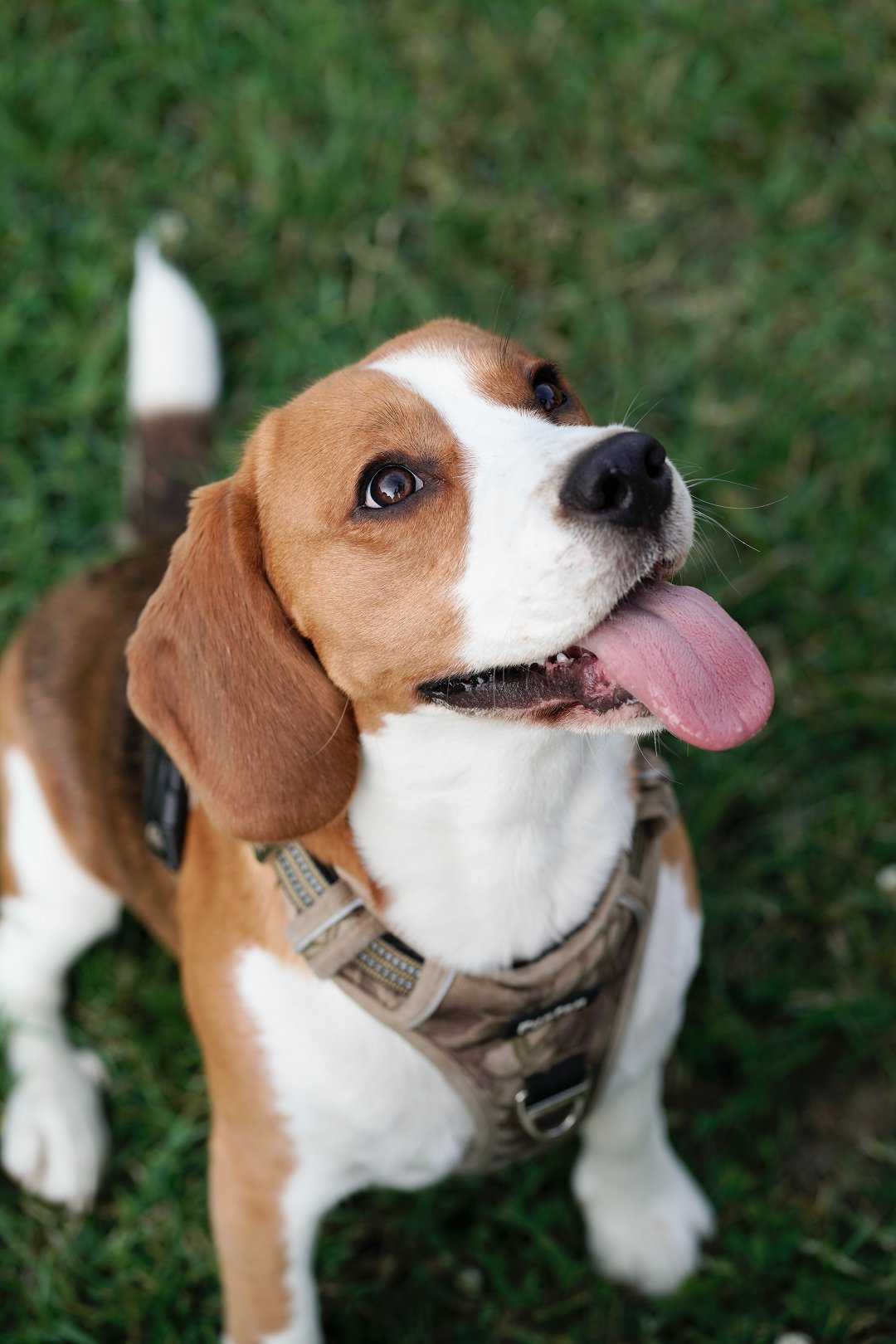Table of Contents
- 1 Introduction: Preparing for Beagle ACL Surgery: What You Need to Know
- 2 The Road to Recovery: Post-Operative Care for Your Beagle
- 3 Rehabilitation Tips for Beagles After ACL Surgery
- 4 FAQs About: How to Care for Beagle After ACL Surgery
- 4.1 Can my beagle walk immediately after ACL surgery?
- 4.2 How can I manage my beagle’s pain after ACL surgery?
- 4.3 When can I start physical therapy for my beagle after ACL surgery?
- 4.4 Are there any exercise restrictions for my beagle during recovery?
- 4.5 How should I monitor my beagle’s progress during recovery?
- 4.6 How should I care for my beagle’s surgical wound?
Introduction: Preparing for Beagle ACL Surgery: What You Need to Know
Are you a proud beagle owner who is about to embark on the journey of caring for your furry friend after ACL surgery? If so, you’ve come to the right place! In this comprehensive guide, we will provide you with all the essential information you need to ensure a smooth and successful recovery for your beloved beagle. From pre-operative preparations to post-operative care, pain management to physical therapy, we will cover it all. So, grab a cup of coffee, sit back, and let’s dive into the world of caring for your beagle after ACL surgery.
Now, let’s address the burning question on your mind: how do you care for your beagle after ACL surgery? After the surgery, your beagle will require a combination of rest, medication, and close monitoring. It’s crucial to follow the postoperative instructions provided by your veterinarian to ensure a successful recovery. In the next section, we will delve deeper into the specifics of post-operative care for your beagle, including pain management, wound care, and mobility restrictions. So, let’s get started on this important journey towards your beagle’s recovery!
The Road to Recovery: Post-Operative Care for Your Beagle
After your Beagle undergoes ACL surgery, it is crucial to provide them with the proper post-operative care to ensure a smooth and successful recovery. Here are some important guidelines and instructions to follow during this crucial period:
1. Pain Management
- Administer prescribed pain medications as directed by your veterinarian to keep your Beagle comfortable during the recovery process.
- Observe your Beagle for signs of pain, such as whimpering, restlessness, or reluctance to bear weight on the affected leg.
- Contact your veterinarian if you notice any concerning signs of pain or if the prescribed medication does not seem to be providing adequate relief.
2. Wound Care
- Keep the surgical incision site clean and dry to prevent infection.
- Follow your veterinarian’s instructions on how to clean and care for the incision site.
- Monitor the incision for any signs of redness, swelling, discharge, or excessive licking, as these may indicate an infection or complication.
- Prevent your Beagle from licking or chewing the incision site by using an Elizabethan collar or other protective measures recommended by your veterinarian.
3. Exercise Restrictions
- Limit your Beagle’s physical activity and provide them with a quiet and confined space for rest and recovery.
- Avoid activities that put stress on the surgical leg, such as running, jumping, or rough play.
- Gradually reintroduce exercise under the guidance of your veterinarian or a professional rehabilitation therapist once your Beagle has healed sufficiently.
- Follow a structured exercise program that includes controlled movements and strengthening exercises to aid in the recovery process.
4. Monitoring and Follow-Up
- Keep a close eye on your Beagle’s progress and monitor their mobility, appetite, and overall well-being.
- Schedule follow-up appointments with your veterinarian to assess the healing process and make any necessary adjustments to the post-operative care plan.
- Communicate any concerns or changes in your Beagle’s condition to your veterinarian promptly.
By following these post-operative care instructions, you can help your Beagle recover successfully after ACL surgery. Remember to provide them with pain management, proper wound care, exercise restrictions, and close monitoring. With time and patience, your Beagle will regain their mobility and return to their active and playful self.
Next, we will explore rehabilitation tips specifically tailored for Beagles after ACL surgery, focusing on physical therapy and exercises to aid in their recovery.
Rehabilitation Tips for Beagles After ACL Surgery
After your Beagle undergoes ACL surgery, it is crucial to provide them with proper rehabilitation to ensure a successful recovery. Here are some helpful tips on how to care for your Beagle during this crucial period:
1. Follow Postoperative Instructions
- Your veterinarian will provide you with specific postoperative instructions for your Beagle. It is essential to follow these instructions carefully to promote healing and prevent complications.
- These instructions may include guidelines on pain management, medication administration, wound care, and activity restrictions. Adhering to these instructions will aid in your Beagle’s recovery.
2. Monitor Your Beagle’s Mobility
- Keep a close eye on your Beagle’s mobility after surgery. Initially, they may experience difficulty walking or standing. Gradually, they should start regaining their mobility.
- If you notice any sudden or prolonged decrease in mobility or if your Beagle seems to be in pain, contact your veterinarian immediately.
3. Implement Physical Therapy
- Physical therapy plays a vital role in your Beagle’s rehabilitation. Consult with your veterinarian or a professional canine physical therapist to develop a suitable exercise program.
- Physical therapy exercises may include gentle range-of-motion exercises, muscle-strengthening exercises, and controlled walking or swimming. These activities will help your Beagle regain strength and flexibility in the affected leg.
4. Gradually Increase Exercise
- As your Beagle’s recovery progresses, you can gradually increase their exercise levels. Start with short, controlled walks and gradually extend the duration.
- Avoid activities that could put excessive strain on the surgical site, such as running, jumping, or rough play. It is crucial to strike a balance between allowing your Beagle to exercise for muscle recovery and preventing reinjury.
5. Maintain a Healthy Weight
- Obesity can put additional stress on your Beagle’s joints, hindering their recovery. Ensure that your Beagle maintains a healthy weight throughout the rehabilitation process.
- Consult with your veterinarian about appropriate diet and portion sizes to help your Beagle achieve and maintain an optimal weight.
6. Regularly Monitor and Adjust Medication
- Pain management is crucial during your Beagle’s recovery. Follow your veterinarian’s instructions regarding pain medication administration.
- Regularly monitor your Beagle’s pain levels and consult with your veterinarian to adjust medication dosages as needed. Effective pain management will help your Beagle remain comfortable during the rehabilitation process.
By following these rehabilitation tips, you can provide the necessary care and support for your Beagle after ACL surgery. Remember to consult with your veterinarian for personalized instructions and guidance throughout the recovery journey.
FAQs About: How to Care for Beagle After ACL Surgery
Can my beagle walk immediately after ACL surgery?
Your beagle will not be able to walk immediately after ACL surgery. It is important to follow your veterinarian’s instructions regarding restricted activity and confinement to allow for proper healing.
How can I manage my beagle’s pain after ACL surgery?
Your veterinarian will provide pain medication for your beagle to manage postoperative pain. Follow the prescribed dosage and schedule to ensure your beagle remains comfortable during the recovery process.
When can I start physical therapy for my beagle after ACL surgery?
Physical therapy should be started under the guidance of a professional once your veterinarian gives the green light. They will provide specific exercises and techniques to help strengthen your beagle’s leg and aid in recovery.
Are there any exercise restrictions for my beagle during recovery?
Yes, there will be exercise restrictions for your beagle during recovery. Avoid activities that put strain on the surgical leg, such as running, jumping, or rough play. Short, controlled leash walks are usually recommended.
How should I monitor my beagle’s progress during recovery?
Regularly observe your beagle’s surgical leg for any signs of swelling, redness, or discharge. Monitor their behavior and appetite, and keep track of any changes or concerns. Contact your veterinarian if you notice anything unusual.
How should I care for my beagle’s surgical wound?
Follow your veterinarian’s instructions for wound care, which may include cleaning the incision site with mild antiseptic solutions and keeping it dry. Prevent your beagle from licking or scratching the wound by using an Elizabethan collar or other protective measures.
Remember, each beagle’s recovery process may vary, so it is essential to consult with your veterinarian for personalized instructions and guidance throughout the post-ACL surgery care.






Leave a Reply